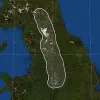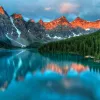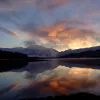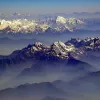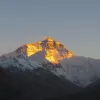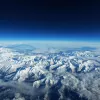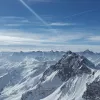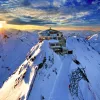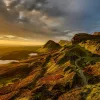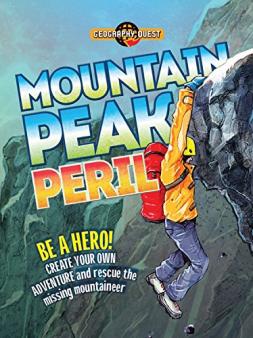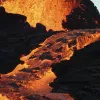Important update from TheSchoolRun
For the past 13 years, TheSchoolRun has been run by a small team of mums working from home, dedicated to providing quality educational resources to primary school parents. Unfortunately, rising supplier costs and falling revenue have made it impossible for us to continue operating, and we’ve had to make the difficult decision to close. The good news: We’ve arranged for another educational provider to take over many of our resources. These will be hosted on a new portal, where the content will be updated and expanded to support your child’s learning.
What this means for subscribers:
- Your subscription is still active, and for now, you can keep using the website as normal — just log in with your usual details to access all our articles and resources*.
- In a few months, all resources will move to the new portal. You’ll continue to have access there until your subscription ends. We’ll send you full details nearer the time.
- As a thank you for your support, we’ll also be sending you 16 primary school eBooks (worth £108.84) to download and keep.
A few changes to be aware of:
- The Learning Journey weekly email has ended, but your child’s plan will still be updated on your dashboard each Monday. Just log in to see the recommended worksheets.
- The 11+ weekly emails have now ended. We sent you all the remaining emails in the series at the end of March — please check your inbox (and spam folder) if you haven’t seen them. You can also follow the full programme here: 11+ Learning Journey.
If you have any questions, please contact us at [email protected]. Thank you for being part of our journey it’s been a privilege to support your family’s learning.
*If you need to reset your password, it will still work as usual. Please check your spam folder if the reset email doesn’t appear in your inbox.
Mountains
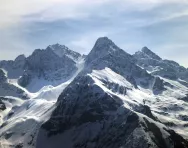
What is a mountain?
A mountain is something that’s part of the land, but that rises above everything else. Mountains can join up with other mountains to make up a range.
Mountains are very rocky and difficult to grow things on. Also, the higher the mountain goes up, the colder it gets – this means different kinds of plants and animals might live at the top of a mountain than at the bottom, depending on just how high it is.
Top 10 facts
- Most mountains are formed when things happen inside the Earth to push rocks up – the longer this happens, the higher the rocks are pushed, and the higher the mountains can be.
- While some mountains are getting taller, you can’t see them grow. It takes a very, very long time for mountains to form.
- The top of a mountain is called the summit.
- It means two different things to say how high a mountain is and how tall it is – measure from sea level to summit to find out how high a mountain is, and measure base to summit to find out how tall it is.
- Some very tall mountains aren’t very high because a lot of the base is under the ocean. Some mountains are even completely underwater!
- The highest mountain in the world is Mount Everest in Nepal – it’s 8,850 metres high!
- The tallest mountain in the world is Mauna Kea in Hawaii, USA – its base is below sea level, and when you measure from base to summit it’s over 10,000 meters tall.
- The highest mountain in the UK is Ben Nevis in Scotland – it’s 1,344 metres high.
- There are five different types of mountains – fold, fault-block, dome, volcanic and plateau.
- Living on mountains is difficult because air gets thinner and colder the higher you go up. Different species of plants and animals can be found at different heights because they’ve had to adapt to the special conditions.


Boost Your Child's Maths & English Skills!
- Start your child on a tailored learning programme
- Weekly resources delivered to your dashboard
- Keep your child's learning on track
Did you know?
- The top of a mountain is called the summit, and the bottom is called the base.
- Mountins are built by the same forces that cause earthquakes.
- Some mountains get a little bit higher every year, and some even get a little bit shorter. In time all mountains fade, worn away where the rocks are exposed to the weather. New mountains are formed by the constant movements of the Earth's crust.
- A group of mountains is called a mountain range.
- The highest mountain range in the world is the Himalayas in Asia.
- The longest mountain range in the world is the Andes in South America.
- Weather changes a lot on mountains. For example, it can be raining at the top but not at the bottom!
- Some of the most common plants you can find on mountains are conifers (a type of evergreen tree).
Have a look through the gallery and see if you can spot all of the following:
- A map showing where the Pennines are
- The Rocky Mountains in Canada and the USA
- Ben Nevis
- The Himalayas
- Mount Everest
- The Pyrenees
- The Alps
- An Alpine building!
- Mountains in Scotland
- Snowdonia
Gallery
About
Mountains are formed when huge areas of land hit each other. The surface of Earth is made up of lots of different sections called tectonic plates, and mountains can be formed in different ways when these plates collide or when magma can get from the centre of the earth up to the surface.
There are five types of mountains:
- Fold (or, Folded)
- This is the most common type of mountain. It’s called ‘fold’ because when the tectonic plates collide, the edges crumple as they are pushed together and the rock of the Earth’s surface is pushed up to create mountains. The Himalayas are fold mountains.
- Fault-block (or, Block)
- When cracks in the Earth’s surface open up, large chucks of rock can be pushed up while others are pushed down. This creates mountains with a long slope on one side, and a sharp drop on the other. The Sierra Nevada mountains in California, USA are fault-block mountains.
- Dome
- Dome mountains are smooth and round-looking. They are formed when magma from in between the Earth’s crust and mantle gets pushed up, but doesn’t ever flow out – so, all the magma makes the land bubble up like a balloon. Bear Butte in South Dakota, USA is an example of a dome mountain.
- Volcanic mountains are formed around volcanoes, which are vents in the Earth’s top layer that let through magma from between the crust and the mantle layers. Mountains are made of ash and cooled lava. Mauna Loa in Hawaii, USA is the largest active volcano in the world.
- Plateau
- Plateau mountains are different from the other mountain types because they haven’t formed because of rock or magma being pushed up. Instead, they’ve formed because of materials being taken away through erosion, which has left deep valleys or gorges next to high cliffs. The Columbia Plateau in the Northwest USA is an example of this type of mountain.
Mountain habitats have a lot of variety. Because mountains are mostly rock, there isn’t much soil for growing things and the trees plants that do grow there are able to thrive in the rocky conditions. You can also find different plants and animals the higher you climb up a mountain, because temperatures get cooler. This also means that there is more rain at the top of a mountain than at the bottom. This is because hot air rises, but as it rises it cools down – as it cools down, it loses moisture and has to drop it off somewhere along the way up. If it’s cold enough, this moisture will fall as snow rather than rain. You can tell just how cold it is at the top of a mountain by looking at how much snow you can see at the summit. Some mountains are so high that it’s too cold for anything to grow at the top, and there is less oxygen at very high altitudes. Often all the trees stop at about the same altitude and the mountain is bare above that apart from scrub and grass – this altitude is called the tree line.
With conditions like that, living on mountains can be very challenging for both animals and people. Animals that live on mountains are used to the cold temperatures and the different types of plants that grow there. These are some of the animals that live on mountains:
- Brown bear
- Coyote
- Snow leopard
- Bighorn sheep
- Wolverine
- Mountain hare
- Ibex
- Great grey owl
- Golden eagle
The highest mountains in each continent are:
- Europe – Mount Elbrus (Russia)
- Asia – Mount Everest (Nepal)
- Australia – Mount Kosciuszko
- Antarctica – Vinson Massif
- South America – Aconcagua (Argentina)
- North America – Mount McKinley (United States of America)
- Africa – Kilimanjaro (Tanzania)
Some famous mountain ranges around the world are:
- The Himalayas, Asia
- The Rocky Mountains, North America
- The Andes, South America
- The Ural Mountains, Europe
- The Alps, Europe
- The Pyrenees, Europe
The highest mountains in the countries of the UK are:
- Ben Nevis in Scotland (which is also the highest in all of the UK)
- Mount Snowdon in Wales
- Scafell Pike in England
- Slieve Donard in Northern Ireland
Mountain words to know
Altitude – a measurement of distance, going up
Erosion – when wind or water sweeps away rock or soil from one place on the Earth’s surface to another
Gorge – a narrow valley, usually with a stream or river running through it
Mountain range – a group of mountains that form a chain or cluster
Slope – the slanted side of a mountain
Summit – the highest point on a mount
Tectonic plates – large pieces of rock that make up the Earth’s surface
Valley – low ground in between mountains
Related Videos
Just for fun...
- Name all the mountain ranges on a world map
- Take a mountains quiz and show off your knowledge
- Identify all the mountain ranges in the world
- Can you place mountains and mountain ranges in the correct place on interactive maps?
Children's books about mountains
Find out more
- A kids' guide to mountains from DKFindOut!
- Watch BBC videos about why the temperature changes as you climb a mountain and Mount Snowdon compared to other world mountains
- Mount Everest facts for kids
- Climbing Mount Everest: stories, photos and videos
- Watch a BBC Teach video about Snowdon, the tallest mountain in Wales, to understand more about what a mountain is and how they’re formed
- A map showing mountains in Europe, the Middle East and North Africa
- Videos about life in the French Alps
- Climbing Ben Hope, Scotland's highest Munro
- Types of mountains, and how they are formed
- Climate and animal life in the Rocky Mountains
See for yourself
- Routes along Scafell Pike
- Walking trails along the Pennines
- The Ben Nevis footpath
- The Cairngorms National Park
- Take a digital tour of the Seven Summits, the tallest mountains on each of the world's seven continents
